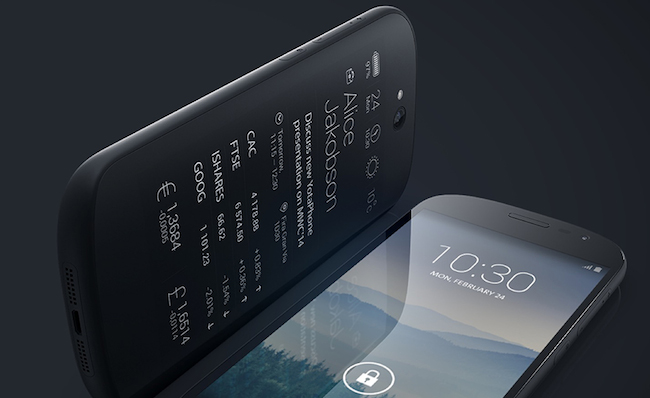There’s a beautiful new smartphone on the way, in both looks and concept.
No ad to show here.
Yota Devices brought out the YotaPhone last year, an Android smartphone with a twist: on the rear was a monochrome eInk display. The best part was that it consumed no power at all, once the image had been loaded onto the screen so the paper-like display barely affected the YotaPhone’s power consumption at all, says Core77.
The Next Web managed to get a full-hand on with the device. The most prominent upgrade is that the eInk display has increased from 4.3 to 4.7-inches, and is now full touch (the old screen had a capacitive touchbar).
The idea behind this is to leave your data in a “permanent” state affixed to the EPD (electronic paper display). So think training guide, weather, stocks, a to-do list and whatever else ready to be viewed at a moment’s notice as the EPD is never turned off. At the least, this will become an invaluable time-saver when the YotaPhone version two makes it to our mortal plane.
Now, the eInk display goes from being a passive screen to an active one. On the first YotaPhone, you would have to flip the phone over to change the information on the eInk display. Now, we’d be able to interact with it like a low-res smartphone screen.
The primary display is high-definition though. It is 1920×1080 and 5-inches in length. There’s also an ingenious option that lets you switch the primary display to the EPD, thereby turning the new YotaPhone into a battery-saving machine. It would be stellar to see how long the phone could really last in this mode. There’s only three of these devices currently made, and the look of the phone may still change. But whatever come out will be a unique new device with an ingenious second screen.
